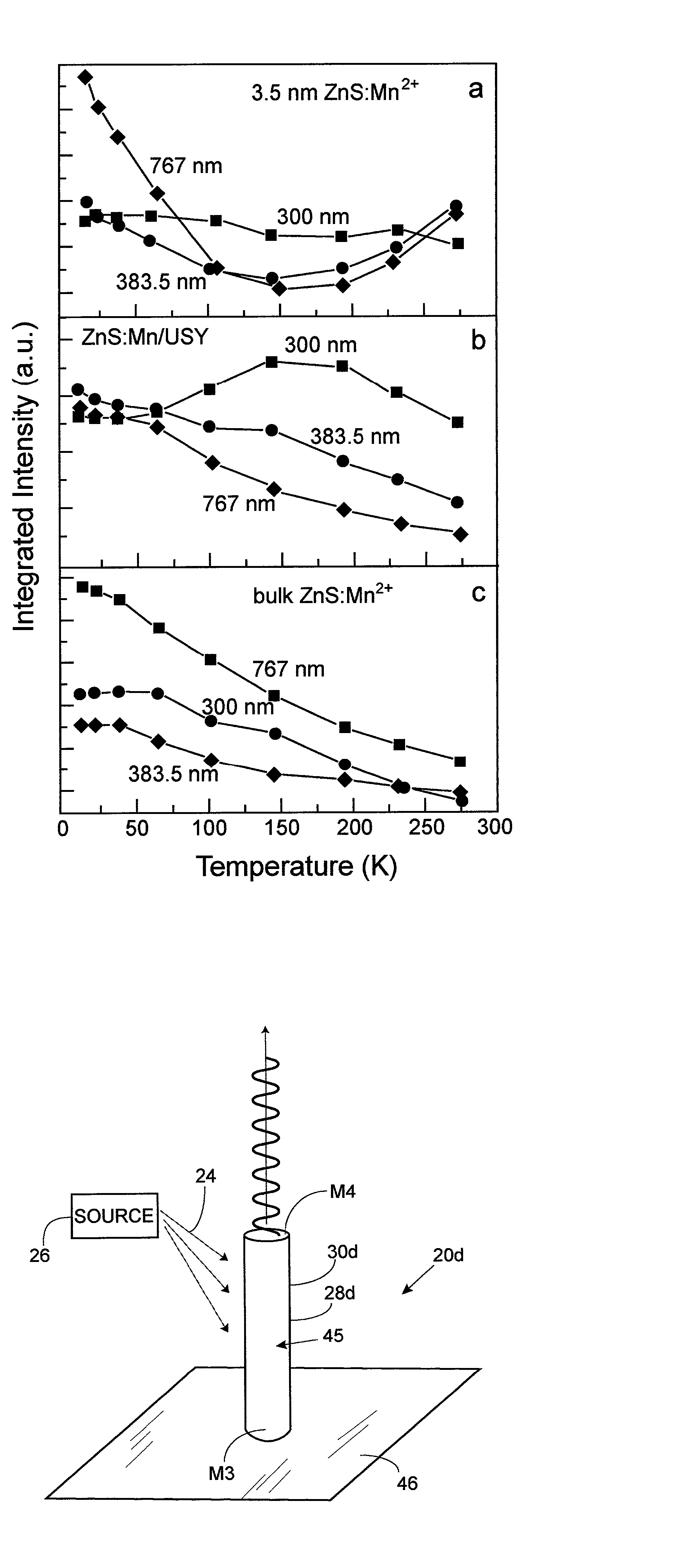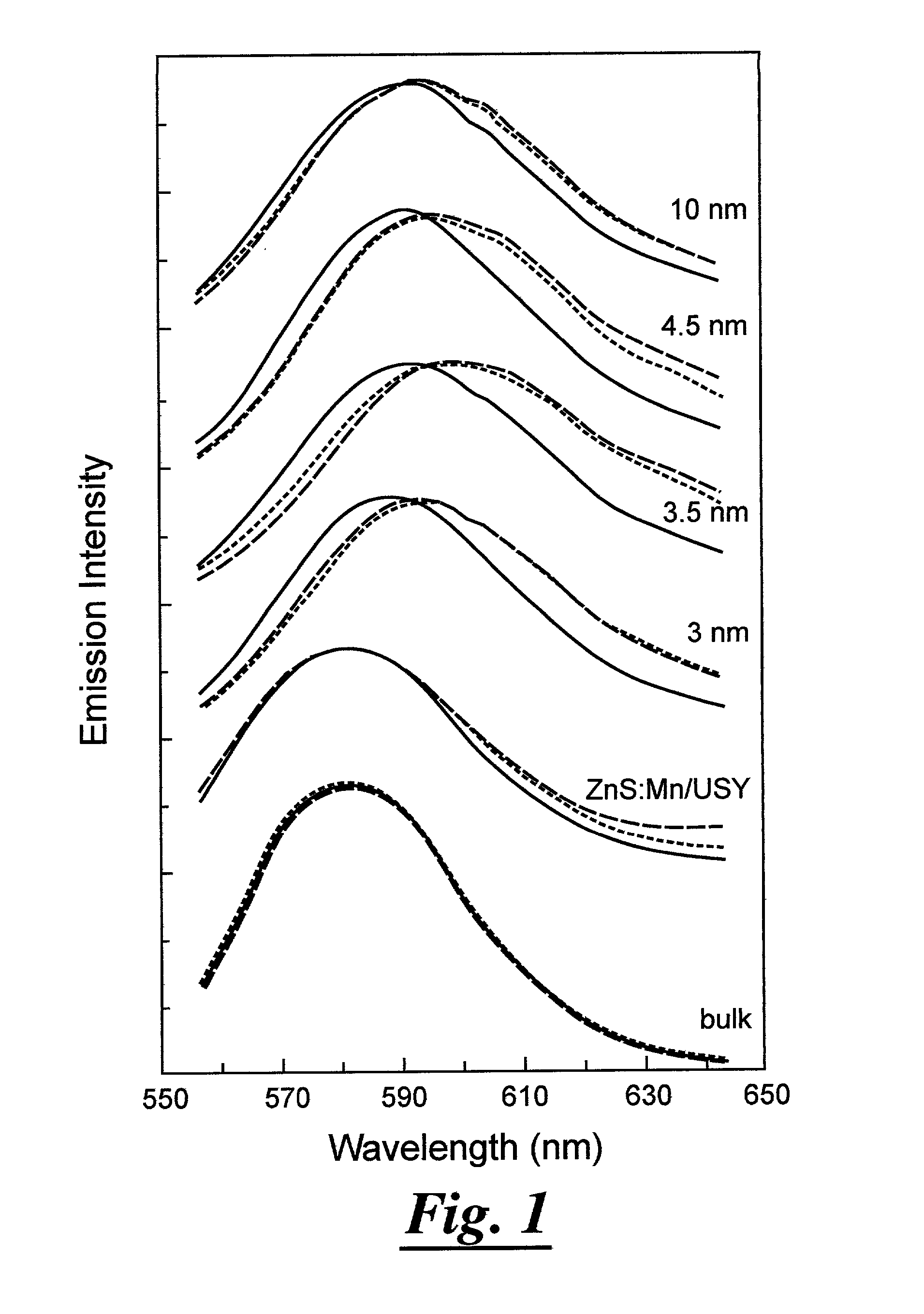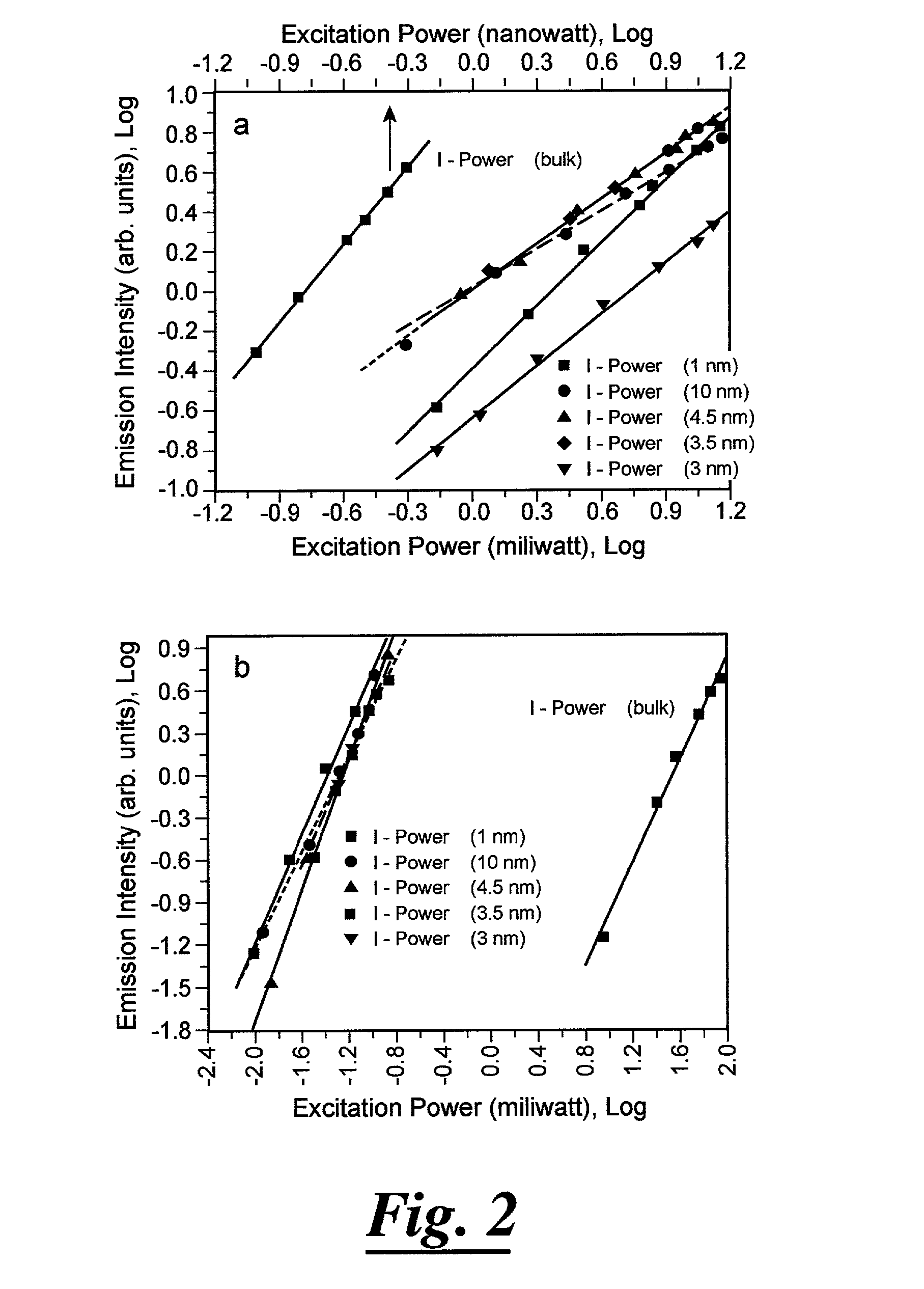Upconversion luminescence materials and methods of making and using same
a technology of upconversion luminescence and materials, applied in the field of upconversion luminescence (" ucl") materials and methods, can solve the problems of weak upconversion luminescence, ineffective upconversion luminescence in oxides, and inability to achieve stable halide in air
- Summary
- Abstract
- Description
- Claims
- Application Information
AI Technical Summary
Problems solved by technology
Method used
Image
Examples
Embodiment Construction
[0094] The preparation, structure, and fluorescence properties of Mn.sup.2+ doped ZnS nanoparticles have been described previously, hereinabove. The photoluminescence and upconversion emission spectra at different temperatures were measured by mounting the samples on the cold finger of a liquid helium flow-through cryostat using indium metal for thermal contact. The cold finger was equipped with a heater element and the temperature was controlled via a Lakeshore Model 330 temperature controller that monitored the temperature via a calibrated silicon diode attached to the indium metal at the sample position. Emission spectra were measured using a constant laser power density at several different temperatures between 8 and 273 K, and the integrated area of the broad Mn.sup.2+ emission was used to calculate the intensity at a specific temperature.
Temperature Dependence of the Emission Wavelength
[0095] The details of the upconversion luminescence of ZnS:Mn.sup.2+ were outlined hereinabo...
PUM
| Property | Measurement | Unit |
|---|---|---|
| emission wavelength | aaaaa | aaaaa |
| excitation wavelength | aaaaa | aaaaa |
| wavelength | aaaaa | aaaaa |
Abstract
Description
Claims
Application Information
 Login to View More
Login to View More - R&D
- Intellectual Property
- Life Sciences
- Materials
- Tech Scout
- Unparalleled Data Quality
- Higher Quality Content
- 60% Fewer Hallucinations
Browse by: Latest US Patents, China's latest patents, Technical Efficacy Thesaurus, Application Domain, Technology Topic, Popular Technical Reports.
© 2025 PatSnap. All rights reserved.Legal|Privacy policy|Modern Slavery Act Transparency Statement|Sitemap|About US| Contact US: help@patsnap.com



